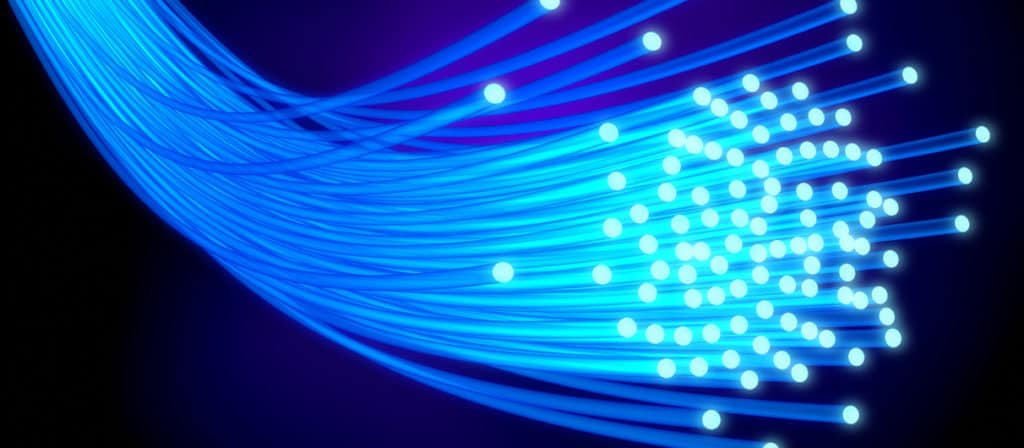Benefits & Advantages of HDPE Conduit

Selecting a conduit material forces contractors and engineers to weigh their options based on experience, knowledge, common sense, available research, and products available. Continuing advances in technology often make material selection a moving target, so it’s essential for industry stakeholders to stay abreast of the latest developments. To this end, telecommunication network owners, power utilities, internet service providers, State DOTs and contractors may get tasked with finding the most effective way to protect wires and fiber optic cables. For power distribution electrical wire and fiber optic cables, high-density polyethylene (HDPE) conduit offers one of the most effective and efficient choices for protecting them.
What is HDPE Conduit?
When directly buried, electrical wires and fiber optic cables used for power transmission or telecommunications may be damaged easily or subject to corrosion. To improve the life span of buried electrical wires and fiber optic cables, installers will run them through a protective pathway known as a conduit.
HDPE conduit acts as an ideal protective housing for communications and power transmission cables. Featuring exceptional physical properties including impact resistance, durability, chemical resistance and anti-corrosive properties, HDPE has become a preferred material for wire and cable housing applications.
Advantages of HDPE Conduit
HDPE conduits offer numerous traits that make it well-suited to telecommunications and electrical applications. Some of these include:
Protection for Power and Telecom Cables
HDPE conduit provides a durable protective pathway for communication and electrical cables. HDPE is impact resistant, saving network critical cables from damage by absorbing impacts from shovels and digging equipment. With proper installation and use of watertight couplers, HDPE conduit systems offer protection from environmental effects such as ground water or corrosive soils.
Flexibility
One of the key benefits of HDPE conduit is its flexibility. This flexibility provides value in the following ways:
• HDPE conduit can be installed via directional drilling, limiting disruption to consumers during construction and saving costly restoration costs (i.e. paving)
• Installers can easily route HDPE conduit around or under obstacles due to its bend radius
• HDPE conduit can also be stored on reels for easier storage and cost-effective shipping. This capability also means that installers can customize the length of continuous HDPE conduit based on application needs. By using longer runs of conduit from the reel, users will minimize the use of couplers and limit access points for environmental damage. When necessary, HDPE conduit also easily joins together with easy to use outside diameter couplings.
Durability
HDPE is inherently durable due to its polymer composition giving it ductile properties over a broad temperature range compared to more brittle competitive materials like metal or other polymers. Conduit pipe made HDPE is more resistant to factors that might damage competitive materials, such as impact deflection, does not become brittle at extreme temperatures, offers chemical resistance to most corrosive substances, has sharper allowable bending radius, and is resistant to negative weather effects like UV rays. These properties make HDPE conduit suitable for protecting wires and cables in a broad range of industrial, commercial, and residential operating environments.
The durable nature of the material typically gives it a service life well beyond most of the cables it protects. HDPE conduit features an estimated service life of 100 years. When combined with its low maintenance and affordable upfront cost, HDPE conduit’s durability makes it an obvious choice for telecommunication and electrical cable applications.
Installation Methods
HDPE conduit offers versatility for installers, featuring compatibility with trenchless installation methods like directional drilling and plowing or more traditional ditch-based installation (i.e. trenching or open cut installation). This installation versatility offers the installer more options to cost effectively install the telecommunications or electrical network given the location and ground conditions the cable network must cover.
HDPE Conduit From WL Plastics
HDPE conduit creates a secure pathway for telecommunications and electrical wiring and cables in an expansive range of operating environments. At WL Plastics, our HDPE conduit is engineered using the highest quality prime grade high-density polyethylene available and passes strict quality inspections before it leaves our facilities. WL Plastics HDPE pipe provides the ideal conduit solution for power utilities distribution, telecommunications, Fiber-to-the-Home (FTTH), CATV, and more.
To see how our HDPE conduit can protect your wires and cables, please contact WL Plastics today.